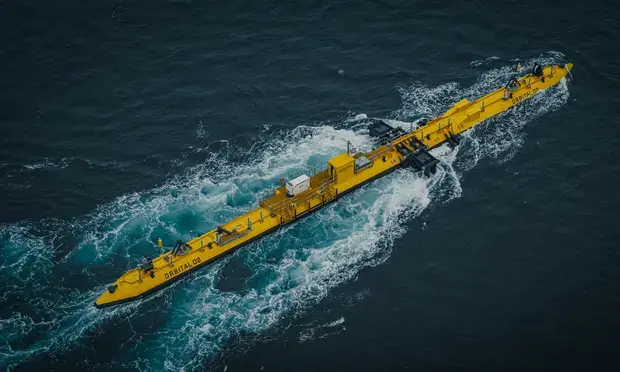Tidal Energy Nears Tipping Point
- Editor OGN Daily
- Dec 1, 2022
- 2 min read
For decades the immense practical difficulties of harnessing the powerful tides flowing around Britain’s shorelines have put off investors and government searching for big renewable energy sources. But that looks like it's about to change.

The good news is that the costs of deploying turbines in tidal streams are falling, leading to more and more people recognising the potential in an energy source that creates energy as tides ebb and flow at predictable hours every day - energy that is renewable but, unlike sun and wind, is not intermittent.
As the world searches for clean energy solutions, it's heartening to know that the cost of generating power from tidal streams has fallen by a whopping 40 percent since 2018 – and a new report by a government-backed research centre, Offshore Marine Catapult, forecasts prices could fall substantially below nuclear energy in little over a decade.
Simon Cheeseman, the report’s author, argues tidal stream energy is at the “point of commercialisation” as companies are keen to scale up production and deployment. He argues that the sector should be carefully nurtured to ensure it follows the successful trajectory of offshore wind, which in 11 years has gone from generating only enough energy for 4 percent of British homes to generating enough for one third of British homes. Indeed, today, the UK's wind installation pipeline of forthcoming projects is currently the biggest in the world.
“In the early days of offshore wind, you had strong government support. This is the perfect blueprint for tidal stream energy,” he says. “There is no reason tidal can’t follow that same route.”

Unlike tidal barrages and tidal lagoons, which involve mounting turbines in sea walls, tidal stream turbines are lowered directly into strong tides out at sea. The challenges of installing and testing turbines in sometimes turbulent waters have made it far more costly than building wind and solar farms. But developers have been steadily refining their designs and driving down costs, with turbines becoming more powerful and easier to deploy at sea. “We are learning by doing: it used to take two days to connect up devices in the water but now it takes just two hours,” says Cheeseman.
Meanwhile, Orbital Marine operates what it says are the world’s most powerful turbines below a plane-like floating platform near Orkney, and Simec Atlantis Energy is planning to install up to 56 turbines on the seabed at the northernmost tip of Scotland by 2027. “We’ve got the world’s largest tidal stream project off the coast of Caithness – 70 percent of the global tidal output has come from that site,” says Sean Parsons, the company’s external affairs director. “We’ve just won a government contract to expand that site from what is now 6 megawatts to take it all the way up to 34 megawatts – enough power for 68,000 homes. It’s tidal at scale.”



